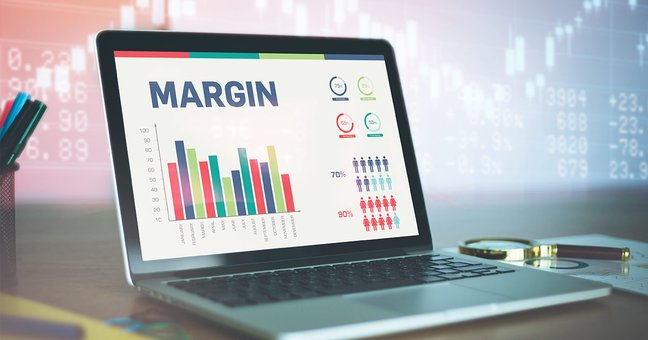Margin in Trading Explained for Beginners
Margin in trading is a fairly simple process of trading specific instruments that are purchased using funds provided by a broker or any other third party. In other words, a trader has a chance to access a larger number of assets or a bigger sum without owning those funds. On the one hand, it helps to leverage traders’ position. On the other hand, trade margin makes it possible to expand potential results, especially when it comes to markets with low volatility.

As a rule, the margin in trading is generally used to trade on Forex. However, some experts successfully utilize the concept of borrowing funds from a broker when trading commodities, stocks, and other popular instruments including cryptocurrency.
Margin Trading Definition
The concept is quite clear. Imagine an individual investor who does not have enough funds but still wants to purchase a specific number of stocks. In other words, a trader is planning to buy more assets that he or she can afford. This is where brokers are ready to lend a hand and provide traders with a specific loan that can be used to buy enough assets.
The concept requires traders to speculate a lot. The main idea is to foresee the movement of the stock price within a given timeframe or trading session. Then, a trader purchases a needed number of assets using funds borrowed from the broker and pays back the rate negotiated in advance.
up to 200%

from 0 pips

Trading platform

How Margin in Trading Works
Trade margin takes place every time a trader borrows funds from the broker to purchase assets. An individual makes an initial payment for the stock, while marginable securities available on the investor’s account can be used as collateral.
If we speak of the general economic context, margin trading meaning describes the difference between the production cost of a specific product and its selling price. Additionally, it highlights the ratio of revenue to profit.
Trade Margin Pros & Cons
The concept is very simple and popular among both professional investors and beginners. It provides newcomers with a solid background and a chance to diversify their portfolios as well as make a good profit within a single trading session. However, margin trading also comes with certain risks that must also be considered.
Pros:
- Larger revenues – the advantage results in a bigger relative value of a traded asset.
- Diversification – a chance to open several positions even without enough funds to invest.
- Trading flexibility – after opening a margin account, traders will benefit from faster position opening without the need to reload their balance with huge sums right away.
Cons:
- Increasing losses – the same way margin trading can expose to huge gains may lead to growing losses. It results in the fact that initial investments are much lower if compared to possible losses. Even a small market drop may have a disaster impact depending on the leverage involved.
The best way to prevent potential risks is to utilize proper risk-management strategies that include stop-limit orders and other instruments to mitigate risks.
The Bottom Line
Margin in trading is definitely an effective tool that helps investors generate high profits. On the one hand, it aids profitability. On the other hand, it helps to diversify a portfolio and generate gains within a single session. At the same time, it requires proper risk management, as the risks involved are generally higher.
This material does not contain and should not be construed as containing investment advice, investment recommendations, an offer of or solicitation for any transactions in financial instruments. Before making any investment decisions, you should seek advice from independent financial advisors to ensure you understand the risks.
